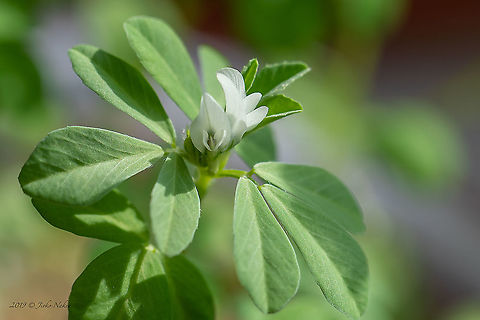
Naming
The English name derives via Middle French ''fenugrec'' from Latin ''faenugraecum'', ''faenum Graecum'' meaning "Greek hay".Food
Fenugreek dietary supplements are manufactured from powdered seeds into capsules, loose powders, teas, and liquid extracts in many countries. Powders may also be used as a topical medication or dressing for skin wounds or eczema. There is no evidence these products have any clinical effectiveness.Fenugreek seeds and leaves contain the molecule sotolone, which imparts the aroma of fenugreek and curry in high concentrations, and maple syrup or caramel in lower concentrations. Fenugreek is used as a flavoring agent in imitation maple syrup or tea, and as a dietary supplement.A mysterious odor of maple syrup – the maple syrup event occurring in New York City in 2005 – was eventually traced to a nearby New Jersey factory of a food additives company processing fenugreek seeds.
Evolution
Fenugreek is believed to have been brought into cultivation in the Near East. It is uncertain which wild strain of the genus ''Trigonella'' gave rise to domesticated fenugreek. Charred fenugreek seeds have been recovered from Tell Halal, Iraq , and Bronze Age levels of Lachish and desiccated seeds from the tomb of Tutankhamen. Cato the Elder lists fenugreek with clover and vetch as crops grown to feed cattle.In one first-century A.D. recipe, the Romans flavoured wine with fenugreek. In the 1st century AD, in Galilee, it was grown as a staple food, as Josephus mentions it in his book, the ''Wars of the Jews''. The plant is mentioned in the 2nd-century compendium of Jewish Oral Law under its Hebrew name ''tiltan''.
Uses
Fenugreek is used as a herb , spice , and vegetable . Sotolon is the chemical responsible for the distinctive maple syrup smell of fenugreek.Cuboid-shaped, yellow- to amber-coloured fenugreek seeds are frequently encountered in the cuisines of the Indian subcontinent, used both whole and powdered in the preparation of pickles, vegetable dishes, dal, and spice mixes such as ''panch phoron'' and ''sambar'' powder. They are often roasted to reduce inherent bitterness and to enhance flavour.
References:
Some text fragments are auto parsed from Wikipedia.